Page 1 of 3
Castniidae
Posted: Wed Jul 20, 2022 7:05 am
by Trehopr1
I don't normally encounter very many Castniidae
in private collections but, when I do see them I
at least get a picture.
So, here's a couple specimens which I recently
ran across and had been purchased by a friend.
If you know something about these then please
tell us....


Re: Castniidae
Posted: Wed Jul 20, 2022 7:19 am
by Panacanthus
Those are Castnia psittachus from Chile. Outstanding species, as are so many from this group! This is actually one of the more readily available species on the market and has been for many years.
Re: Castniidae
Posted: Wed Jul 20, 2022 9:52 am
by bobw
Panacanthus is correct in his identification except that "psittacus" (note spelling) is an invalid name, the valid name for the species, which is a Chilean endemic, is Castnia eudesmia. Although many species are mentioned under the genus Castnia, it only comprises a small group of between 3 and 7 species, the rest are now in different genera. I am currently working on a revision of the genus which should finally sort out the mess.
I have a large collection of Castniinae. probably the largest private collection in the world, although I'm missing about 15 - 20 species. They are a very poorly known group and I'm working on a project to revise them genus by genus, I've just submitted the 3rd paper in the series for publication and am working on several more. If anyone's interested in seeing photos, whether of complete drawers or individual specimens please let me know.
Re: Castniidae
Posted: Wed Jul 20, 2022 2:15 pm
by Panacanthus
VERY interesting bobw! I was hesitant as to whether the “h” belonged in there, as it is often, but not always, written with it included, but I had no idea the name was now invalid. It is the first time I’ve seen it called C. eudesmia! Great information.
As for seeing complete drawers or individual specimens, that would be wonderful! Although I have only a small collection of Castnia, they’ve always been a top favorite, and I’m sure many others would love to see them as well.
Re: Castniidae
Posted: Wed Jul 20, 2022 3:00 pm
by bobw
The name psittacus Molina, 1782 was invalidated by the many deficiencies, inconsistencies, misrepresentations and misinterpretations in and of the original description. The oldest name available for the taxon is Castnia eudesmia Gray, 1838.
C. eudesmia is the only castniid occurring in Chile; funnily enough, the name psittacus should actually be applied to the only papilionid occurring in Chile - Battus polydamas archidamas.
Re: Castniidae
Posted: Wed Jul 20, 2022 5:04 pm
by adamcotton
Indeed, psittacus (Molina, 1782) is the valid name for the Chilean Battus.
Adam.
Re: Castniidae
Posted: Wed Jul 20, 2022 6:24 pm
by Trehopr1
Here are a few other select species which I have run across
over these last 5 years. A couple belong to collectors I know
whilst the other three went up for sale in collections being
parted out.
In a way, I like these (which is why I get photo's) but, I don't
collect them as I already have enough varied interests and
my cash only goes so far !
You will have to excuse some of the picture quality as
each photo opportunity presented differing light conditions.
However, I have tried to select my best pic's involving
each circumstance.

Athis staudingeri (female)
Costa Rica, Osa, Jan.2014

Athis clitarcha or inca (male)
Costa Rica, Golfito, July 2009

Athis inca inca (male)
Mexico, Vera Cruz, July 1978

Eupalamides sp.
Sept.1985
So, the names given are what was on the specimens
labels at the time. These may have changed since
then. At least, all had reasonable data so as to know
where and when collected.
**Genus corrections courtesy of bobw


Re: Castniidae
Posted: Wed Jul 20, 2022 7:00 pm
by bobw
The top specimen is Athis staudingeri, although it's currently considered to be a subspecies of A. palatinus. The second looks more like Athis inca, although inca and clitarcha are very difficult to tell apart, this is the subject of ongoing investigation, it's a male, not a female. The third is a male of Athis inca inca. The bottom one is Eupalamides cyparissias, or possibly E. guyanensis, it's only possible to be sure from a close up of the underside, daedalus is a homonym. None of them are in the genus Castnia, although they were originally described that way.
Re: Castniidae
Posted: Wed Jul 20, 2022 7:32 pm
by Trehopr1
Thank you bob for your expertice !
I will make genus corrections shortly to
my posting. Unfortunately, no underside
shots were taken of any so I won't know
which species the last photo represents.
Re: Castniidae
Posted: Thu Jul 21, 2022 12:23 am
by Panacanthus
I've looked through old photos and found a few which are worth posting. Nothing really rare, but some beautiful specimens. I sold these a few years back and cannot remember the names (which would be wrong now anyways lol!!), so perhaps bobw will wish to identify them for us!
Recto and verso of same specimen

- castnia1.jpg (708.63 KiB) Viewed 1735 times
Recto and verso of same specimen

- Castnia 2.jpg (634.25 KiB) Viewed 1735 times
Recto and verso - this was sold to me as Castnia papilionaris - this specimen was very large

- Castnia papilionaris.jpg (606.18 KiB) Viewed 1735 times
Re: Castniidae
Posted: Thu Jul 21, 2022 12:28 am
by Panacanthus
Wasn't able to add more than 3 images in the last post so posting again!
As before, I don't remember the name...

- Castnia 3.jpg (579.34 KiB) Viewed 1734 times
Re: Castniidae
Posted: Thu Jul 21, 2022 1:28 am
by Panacanthus
The following are a Pair of (
Castnia daedelus) - which, thanks to bobw, we now know are actually (most likely)
Eupalamides cyparissias. I don't have images of the undersides for a positive id. These are large moths - the female was huge.
I am posting some photos which will fully reveal just how deceptive the colors of these moths can be. You may look at the first photo and think they are rather drab. Decent patterns on the female, but obviously not much color. Well, that would be wrong! Continue on to see just how amazingly they come to life with the proper angle of light. There is no photoshop trickery here. Just photos taken from the proper angle, with a small flashlight shining the light onto them from the proper direction. The colors also change and vary depending on slight variations in the light angle. All of the additional photos are of the female.
I still cannot add more than three photos to each post (not sure if this is normal) so these will be shown in several posts.
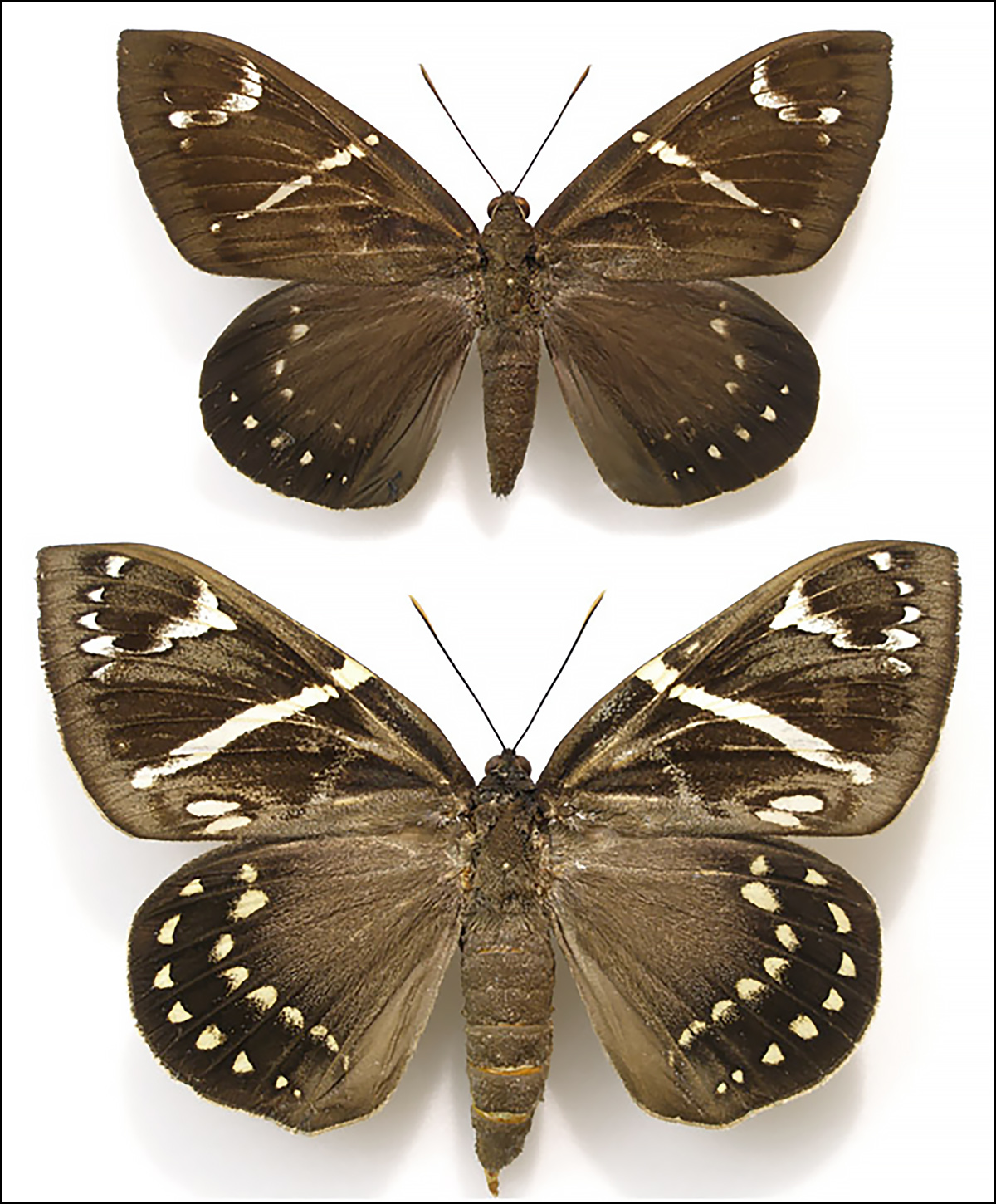
- Castnia daedelus Pair.jpg (567.8 KiB) Viewed 1733 times
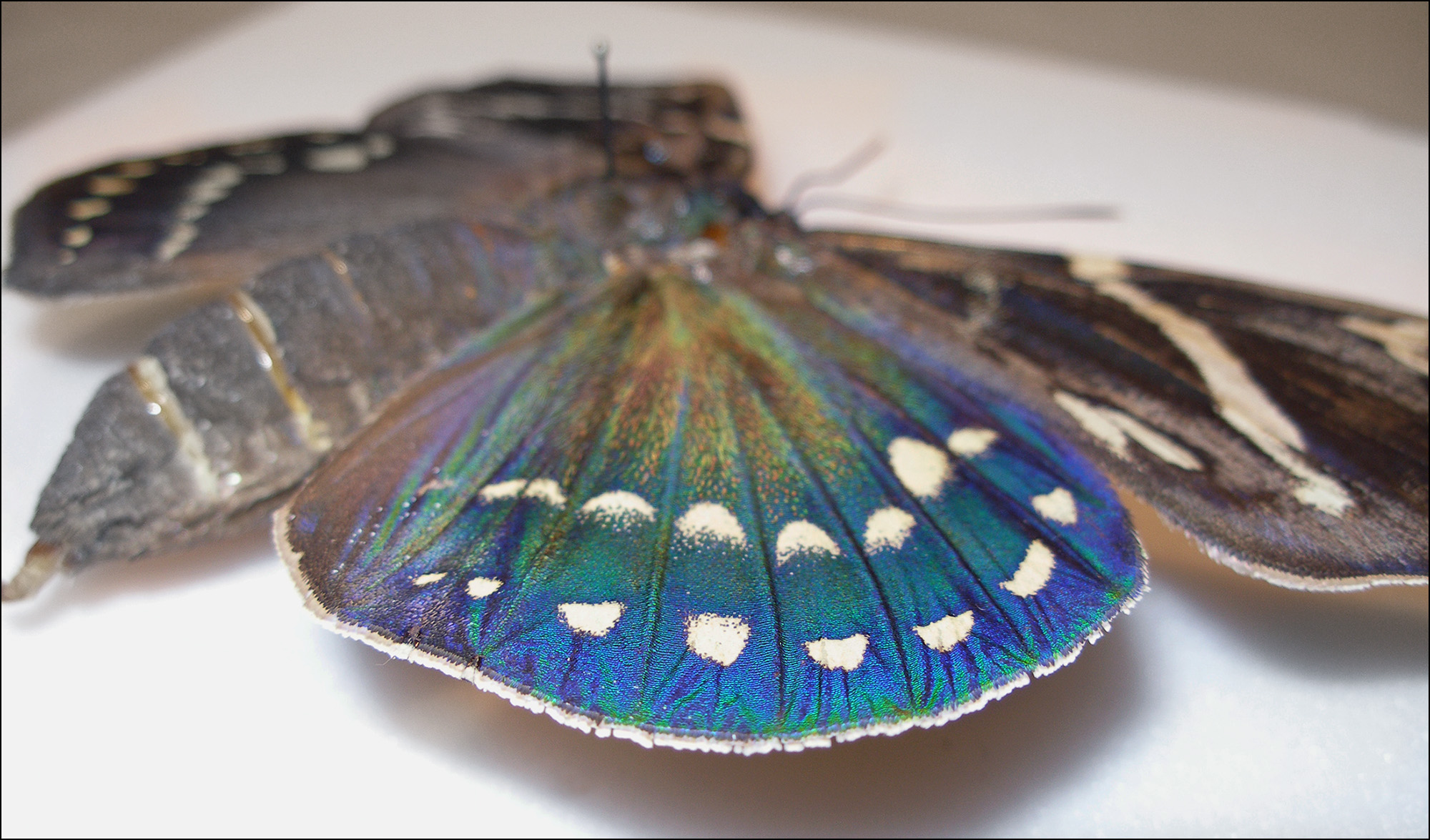
- angle3.jpg (611.81 KiB) Viewed 1733 times
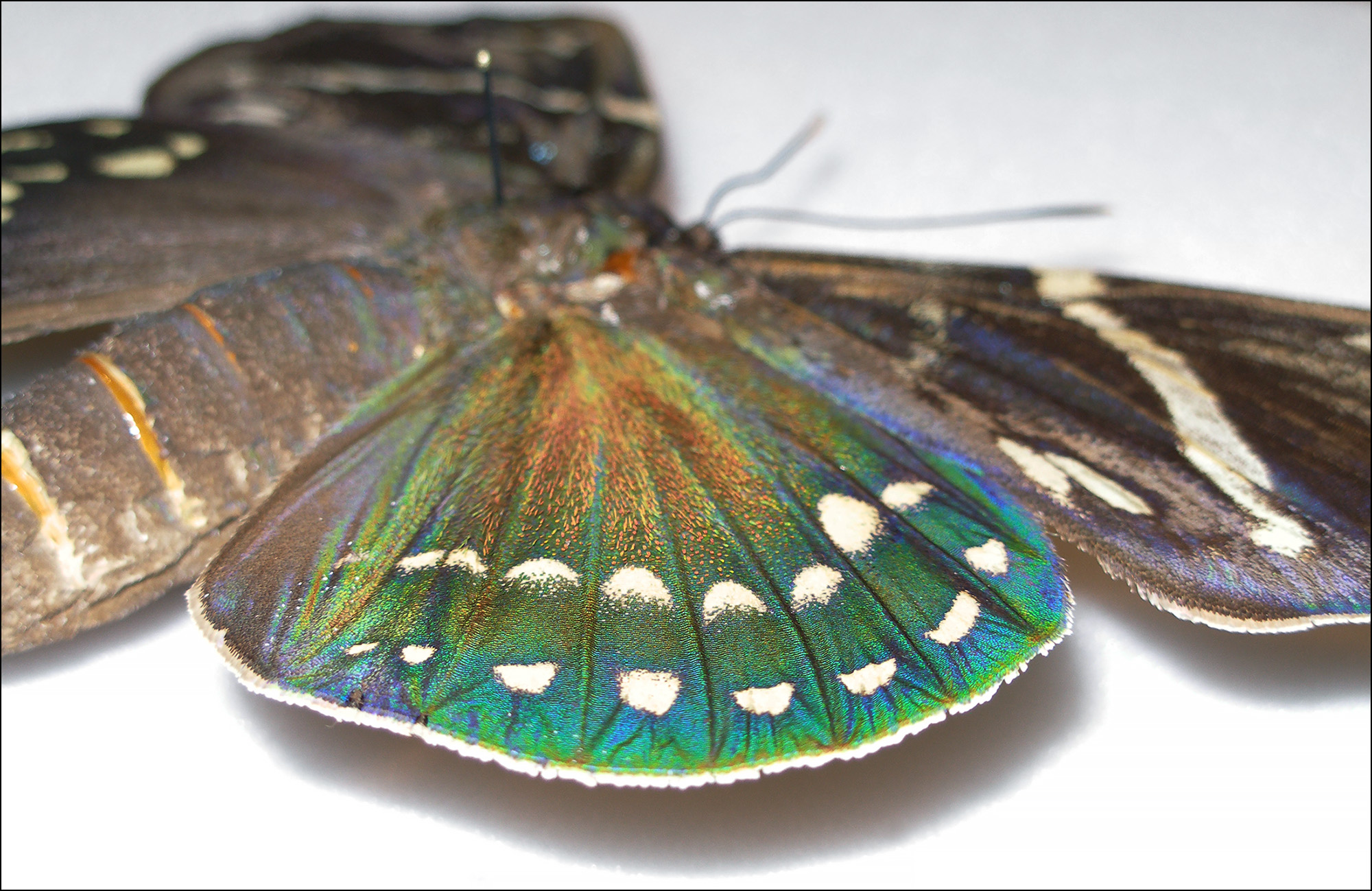
- angle2.jpg (745.05 KiB) Viewed 1733 times
Re: Castniidae
Posted: Thu Jul 21, 2022 1:29 am
by Panacanthus

- angle4.jpg (782.36 KiB) Viewed 1733 times
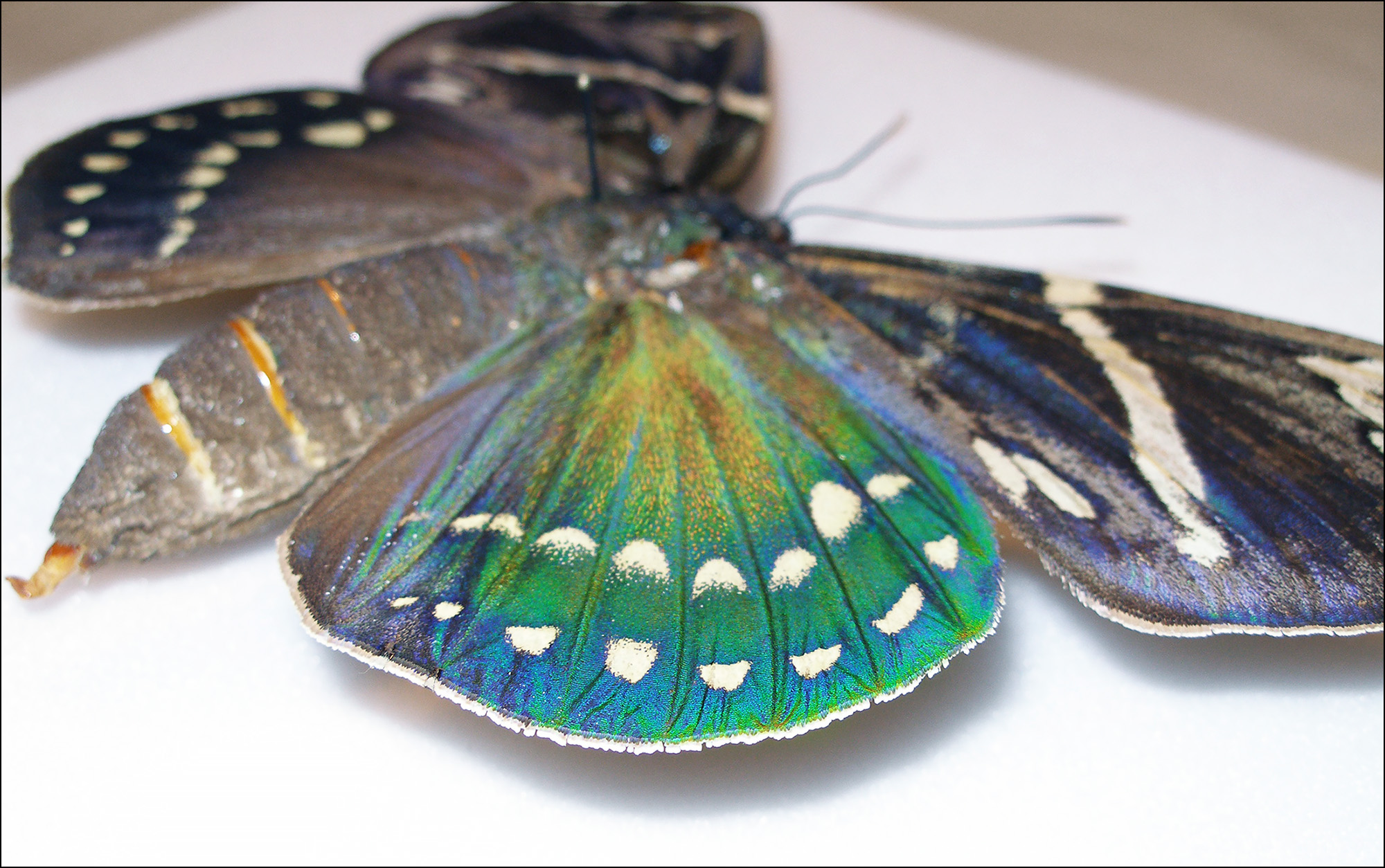
- angle5.jpg (692.83 KiB) Viewed 1733 times
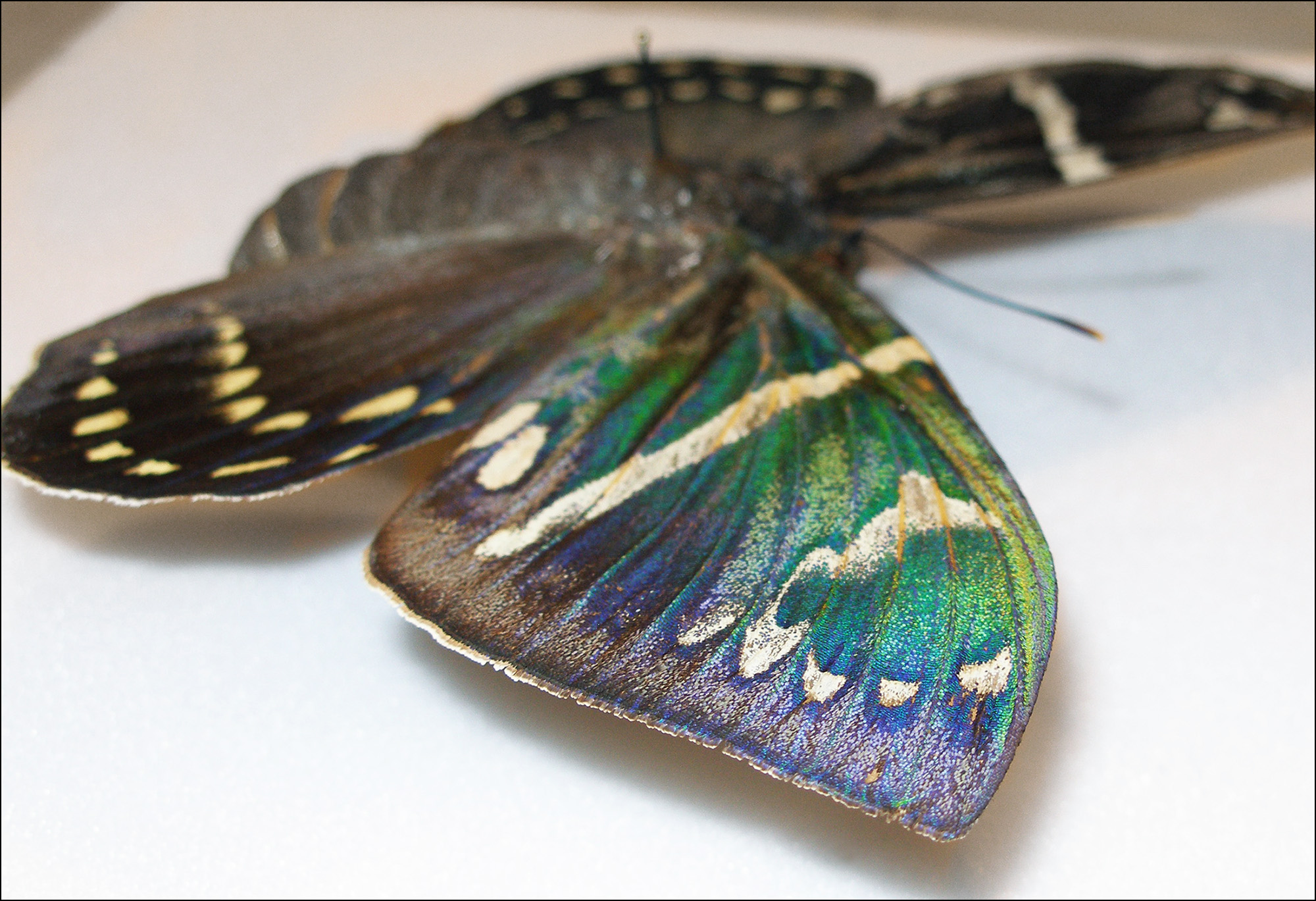
- angle6.jpg (715.1 KiB) Viewed 1733 times
Re: Castniidae
Posted: Thu Jul 21, 2022 1:32 am
by Panacanthus
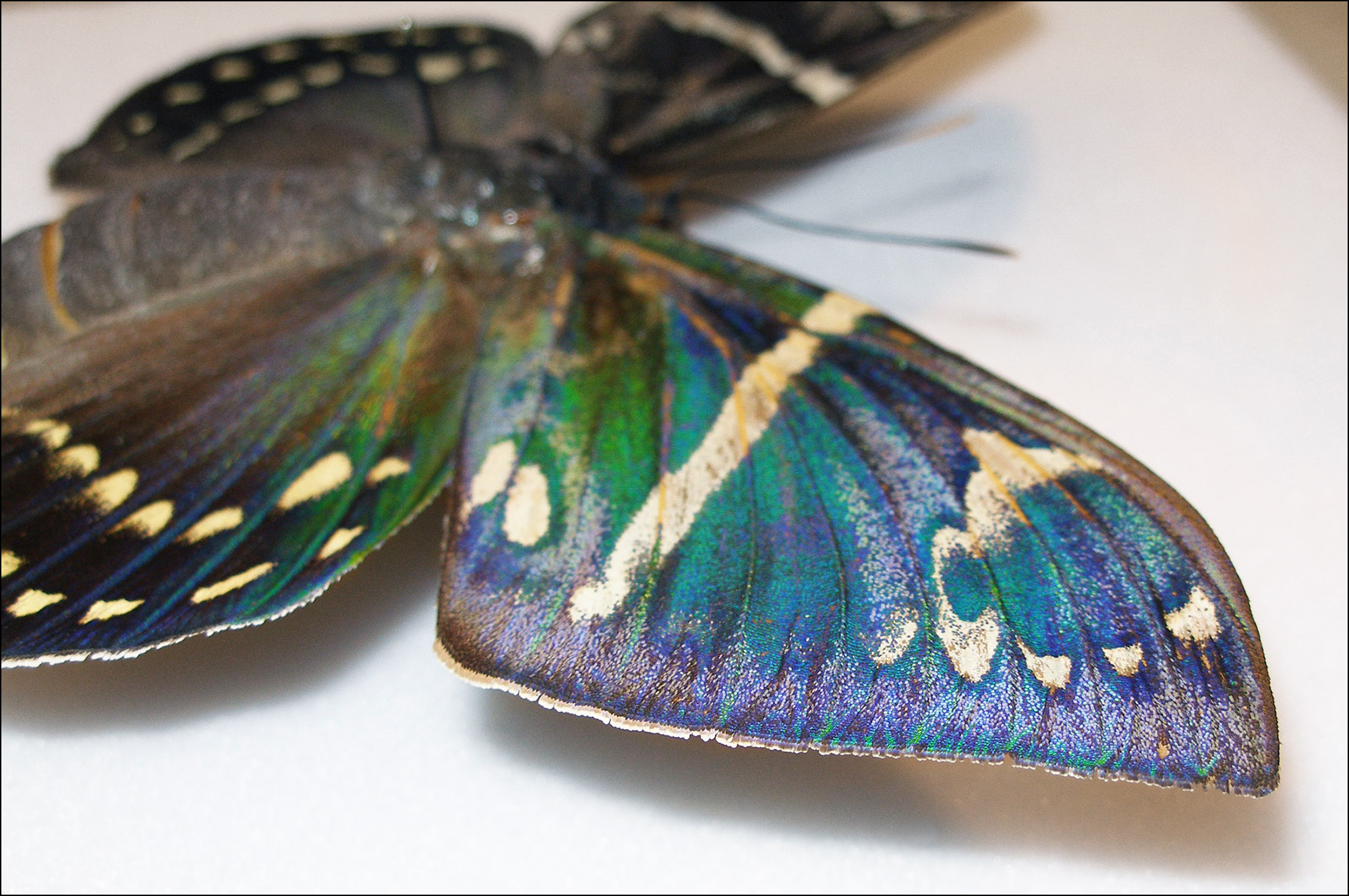
- angle7.jpg (569.61 KiB) Viewed 1733 times
This photo was taken without the hand held flashlight, so you can see that the angle from which the wing is viewed means nothing without the light source also coming from the proper direction.
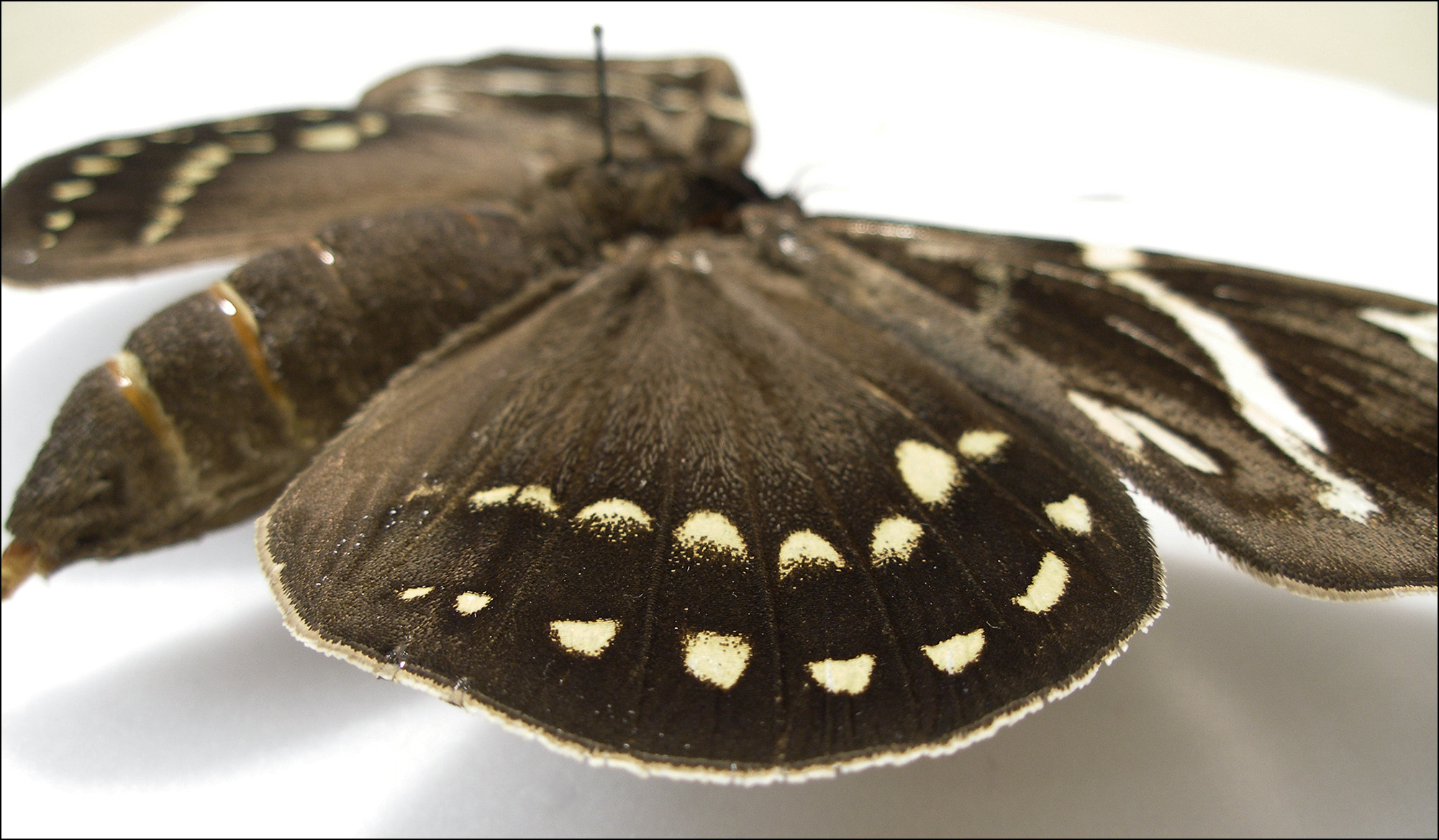
- angle1.jpg (542.1 KiB) Viewed 1733 times
Re: Castniidae
Posted: Thu Jul 21, 2022 6:48 am
by bobw
In Panacanthus's 1st post the top specimen is a male Telchin evalthe, probably ssp. evalthoides from Peru; the 2nd one is a male Imara satrapes from south-east Brazil; and the bottom one is a female Amauta p. papilionaris, probably from Peru or Ecuador. In the following post is a male Telchin licus, this is easily the commonest castniid and is found throughout most of South America with little variation. In some areas it is a major pest of sugar cane crops.
Many different castniids have green, blue or purple reflections as shown in his photos of E. cyparissias, which is indeed a giant. Unfortunately, these reflections, and indeed the main wing colours, are often obscured as they're very prone to greasing.
Re: Castniidae
Posted: Fri Jul 22, 2022 10:23 am
by bobw
As some people requested more photos, I'm attaching a drawer from my collection. This is the genus
Haemonides, which is the first genus we revised. If anyone would like a copy of our 2017 paper on the genus, please send me a PM. If there is any appetite for it, I can post more photos. Please excuse the poor photo quality but it was taken with a mobile phone. Three of the four species are represented (
H. emiliae is only known from Belem, Para, Brazil), my series of the small one on the right -
H. candida represents half of the known specimens, and the male is still unknown:
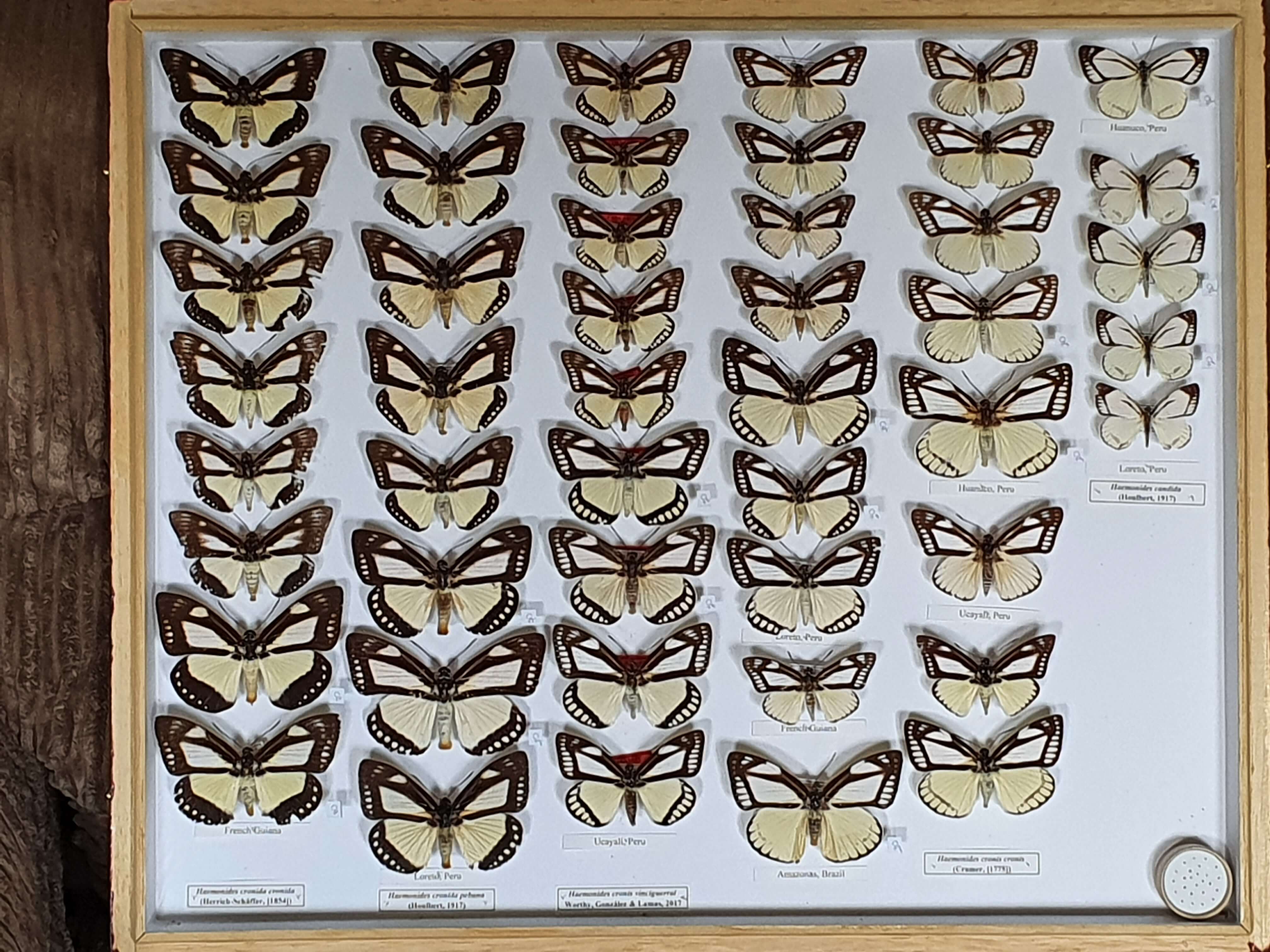
- RW Haemonides.jpg (742.06 KiB) Viewed 1674 times
Re: Castniidae
Posted: Fri Jul 22, 2022 11:58 am
by joachim
The castnia are often underestimated in terms of briliance
and coloration. Thanks for the great pictures!
Re: Castniidae
Posted: Fri Jul 22, 2022 12:04 pm
by Chuck
I love these dedicated focus efforts on particular families and genera. I'll never have time in my life to focus on Castniidae (for example) so to see the variation is amazing. Thanks.
Re: Castniidae
Posted: Fri Jul 22, 2022 3:13 pm
by Trehopr1
Indeed, bobw it would be very nice to see any additional photos of your marvelous holdings !
Very few people seem to collect these (or at least any number of them) so each posting you are able to muster will peak interest in this altogether overlooked family.
Re: Castniidae
Posted: Sat Jul 23, 2022 9:10 am
by bobw
As people seem to want to see them, here is another drawer, again, apologies for the poor picture quality. this one contains some overflow from
Xanthocastnia plus
Geyeria,
Insigniocastnia and
Castnius. All species are represented so there aren't many species in the genera and some, e.g.
G. strigata and
C. marcus seem to be very rare:
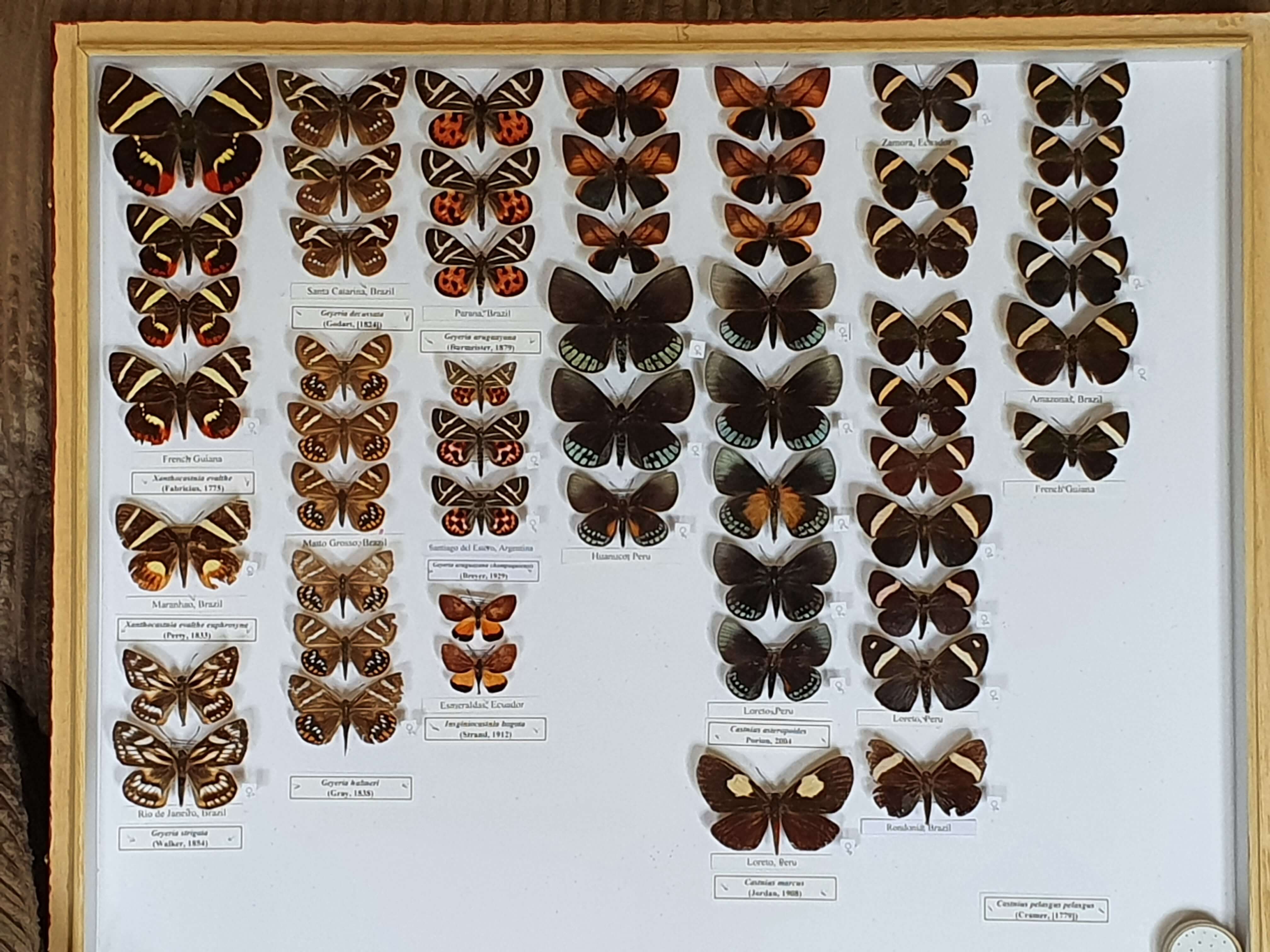
- RW Geyeria etc.jpg (604.03 KiB) Viewed 1614 times







